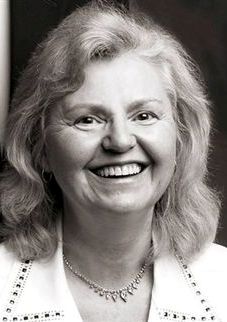 |
| Map of Denmark 1570 |
The setting for my latest release, Wild Viking Princess is the island of Strand, which in medieval times was located off the west coast of Denmark. As I described in a previous post, the island was torn apart by a vicious storm in 1634, and became three islands.
The history of the region is a long and complex one. Those lands now belong to Germany. Below is an attempt to simplify that history by means of a timeline.
450 - 500 Angles, Saxons (the
Anglo-Saxons) and Danes from the area that would much later be known as
Schleswig-Holstein raided England after the Romans had left. They found the
fertile land good for farming, and settled, bringing their families over
798 Charlemagne defeated the
north-Elbian Saxons, supported by his Slavonic allies who had settled in
eastern Holstein 400 years before.
804 Charlemagne began to have
fortified settlements built north of the Elbe-River, beginning with Hamburg -
which was never part of Schleswig-Holstein. He drove several thousand Saxon
families out of their homeland, and made them settle in southern Germany
(Bavaria, Suabia, Rhine-area).
from 804 Beginning of
Christianisation of the pagan North, churches were built.
900 Haithabu, a thriving town
that would later be rebuilt as Heddeby, was a trading-post of European
importance. The population was mainly Danes and Vikings from Sweden.
800- 1100 The land north of the
Elbe-River and Hamburg was raided and dominated by Danes. The Franks, whose
dominance in Germany was taken over by Saxon rulers, tried to keep up their
influence. My latest release, Wild Viking Princess, is set in 1124 AD.
 |
| Reconstructed Viking village |
1111 Adolf I. of Schauenburg was
installed as Count of Holstein. He and his heirs brought peace and Christianity
back to Holstein. Many towns and churches were founded and built during the
rule of the Schauenburgers. Dutchmen, Frisians and Westfalians were called into
his county, of whom especially the Dutchmen and the Frisians were experts in dyking,
and in turning marshes and moors into fertile land and safe ground. They came
as colonists, stayed and settled, mixing with the native population. The
Slavonic people in eastern Holstein were gradually integrated into Holstein, with
the help of the Bible, patient colonisation, and mainly the sword. Schleswig remained
under Danish rule, with a mixed population of Danes and Germans.
1200 - 1203 Holstein, Hamburg,
Luebeck and Ratzeburg fell into the hands of the expansive Danish Kings, Knud
(- 1202) and Waldemar II., who ruled from 1202 to 1241.
1227 Battle of Bornhoeved. A
decisive battle amongst several that had been fought before. Holstein was
reconquered, and the Danish policies of expansion were ended.
1227 - 1460 This period may be called
"struggle for dominance in Schleswig", Danes and Germans claiming and
negotiating their rights.
abt. 1350 The "Black
Death", the bubonic plague, haunted Denmark and the duchies. Especially
the west coast and the islands were afflicted. Of an estimated population of
420 000 souls in both duchies in 1340, there were only 230 000 left in 1353.
1440 Holstein and Schleswig
united under Adolf VIII. of Schauenburg, the last of his line.
1460 Treaty of Ripen: the Danish
King Christian I. was installed as Duke of Schleswig and Count of Holstein. He
had to grant privileges to the knighthood of the two lands and to their people.
Apart from that and before all, he vowed that Schleswig and Holstein would
remain forever undivided.
1474 Holstein became a duchy.
1500 The Battle of Hemmingstedt.
The Duke of Holstein, King Hans of Denmark, attempted once again (after his
predecessors had failed in 1319 and in 1404) to bring the renitent Dithmarscher
population under his yoke, to make them pay their dues. He had hired 4000
fierce mercenaries, the Black Guard, who were followed by 2000 knights of all
noble houses of Schleswig, Holstein and Denmark, and another 5000 armed
subjects. The Dithmarschers, highly outnumbered, battled for their independence
once more, and did so successfully, for the last time.
1569 Dithmarschen's last feud.
The King of Denmark came with an army of 18 000 well armed followers and took
the country. The Dithmarschers had to acknowledge his reign, and to give up
their old parliamentary system of self-administration.
1618 - 1648 The Thirty Years' War
brought devastation over Schleswig, Holstein and vast parts of Europe. The
German Emperor sought to reinstall the Catholic Belief in all of Germany, after
Protestantism according to Martin Luther's doctrines had spread over most parts
of northern Germany during the bygone century. What had started off as a
religiously motivated crusade turned into a European war, with shifts of power
and territorial changes in the end. Schleswig and Holstein were afflicted by heavy
looting, and also by diseases the passing troops were the carriers of,
especially the bubonic plague once again. Those who survived fled from their
farms. It took a long time until Schleswig and Holstein had recovered from that
cruel war.
 |
| 16th century map of Denmark |
1634 The North Sea coast and
islands were destroyed by a tremendous flood that tore apart everything that
hard-working Frisians and Dithmarschers had built to protect their land from
the sea's destructive force. The large island Nordstrand was washed into the
sea, leaving only two small fractions to exist after the deluge. Of the 8 600
inhabitants, only a quarter survived.
1700 - 1721 The Nordic War
between Sweden on one side and Denmark, Poland and Russia on the other, saw
Schleswig and Holstein as a battlefield again. Marauding troops devastated
large parts of the duchies.
1760 - 1800 Peaceful times, for a
change. Reformation of the archaic structures in farming: fields that had been
used by all villagers were split up into individual property, and the whole
territory belonging to a village was restructured, into larger units and with
new roads. Moors and bogs were colonized by settlers from southern Germany, who
also introduced the potatoe as a staple food into Schleswig-Holstein, where
people had been used to live of buckwheat, oats, and cabbage mainly.
1800 - 1805 Serfdom was abolished
in both duchies. One of the points of conflict in my novel is the Danish tradition of thralldom, or slavery.
1813 King Friedrich (Frederic)
VI. of Denmark had opted to join arms with Napoleon, the expansive-minded
French ruler. The war had brought the economy to the ground, and the Kingdom
was bankrupt. Whose riches were counted in bankdrafts or cash money, he became
a poor man in 1813. And Prussian, Swedish, and Russian troops invaded
Schleswig-Holstein, bringing destruction over the duchies. The Russians did not
leave until December 1814.
1814/15 The Duchy Lauenburg came
under Danish rule (the Danish King became Duke of Lauenburg).
1815 The "German
League" (der Deutsche Bund) was established, Holstein part of it, but
remaining under Danish rule (the King of Denmark was the Duke of Holstein. He
represented Holstein in the German National Assemblies. He was also the Duke of
Schleswig, but Schleswig was not part of the "German League").
1815 - 1848 Nationalistic and
patriotic activities on both sides of the Eider-River, mainly about the status
of Schleswig, which was the focus of interest of Germans and Danes likewise.
1848 The Danish King granted the
Duchy Holstein the right of a constitution of its own, and, under strong
patriotic and nationalist influence, decided that the Duchy Schleswig should
have a constitution that was valid for the whole Danish Kingdom, with Schleswig
part of it. That would have eased the long-standing union of the two duchies
apart, by way of political and administrative means. The duchies installed a provisional
government of Schleswig-Holstein in Kiel, under the German flag and under the
colors of hope for a united German Schleswig-Holstein: the new flag in blue,
white, and red.
1848 - 1851 Uprise and war
against Denmark. Schleswig-Holsteiners fought along with many volunteers of all
Germany, and a very strong Prussian contingent. Denmark came out victorious at
the end. Many casualties on both sides.
1852 - 1864 Denmark forced the
Danish language upon large parts of Schleswig, to be spoken in schools, at
court, and in church (in turns with services in German). Dismissal of pro-German
officers from the army, of pastors and teachers, of functionaries in public
office. Many Schleswig-Holsteiners opted for emigration under those oppressive
circumstances, hoping to find in America or Australia what they could not find
here.
1863 Prussian and Austrian troops
marched into Holstein to secure German interests.
1864 Denmark imposed the
all-Danish constitution upon the Duchy Schleswig. Conflicting views about the
rightful succession for the office of the Duke of Schleswig. Prussian and
Austrian troops fought the war with the duchies, driving the Danish army out of
Schleswig-Holstein. With the Treaty of Peace of Vienna, the Danish Kingdom
renounced all claims and rights in the duchies Schleswig, Holstein, and
Lauenburg. The people of Schleswig were given the option of choosing Danish
citizenship within the following six years. Many made use of that offer to
avoid military service under Prussian conditions. They became Danish subjects
living in Prussia, without political rights.
1864 - 1866 Holstein under
Austrian administration, Schleswig and Lauenburg under Prussian.
1866 Prussian - Austrian War
about dominance in the German League. Austria defeated. All three duchies under
Prussian administration. Universal conscription was introduced, a three years
term of service became compulsory for everyone.
1867 Schleswig-Holstein-Lauenburg
(the latter officially in 1876) were integrated into the Kingdom Prussia. The
duchies were ruled from Berlin. The Schleswig-Holsteiners became
"Must-be-Prussians". The dream of a state of their own was over. A
rise in the number of emigrations ensued.
1870 - 1871 Germany (Prussia,
rather) at war with France.
1871 Establishment, foundation of
the "German Reich" (das Deutsche Reich). The duchies, now called
"Regierungsbezirk Schleswig", as a Prussian province, being part of
it.
1914 - 1918 World War One,
Germany defeated. Denmark remained neutral.
1919 Treaty of Peace of
Versailles. It was decided that the northern German border in Schleswig should
be redrawn, taking into account the will of the people, to be expressed in a
referendum, with the choice of Danish or German citizenship.
 |
| Denmark today |
1920 The new border between
Germany and Denmark was drawn as it still exists today. There remained,
however, Danish minorities living this side of the line, as well as German
minorities in Denmark, each with the privilege of the use of their language and
the cultivation of their national heritage.




















































